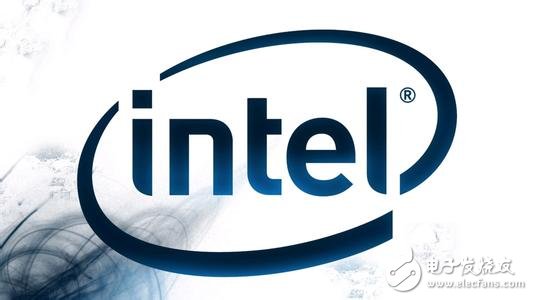On April 2, Shenzhen, Intel China President Yang Xu said that Intel has adjusted the focus of global industrial cooperation and will invest more innovative resources in Shenzhen.
For the global chip giant Intel, it is now a delicate moment. Although the company does not need to face life and death for the time being, every decision at the moment may push it to the brink of life and death.
In the era of mobile Internet, Intel has shown its declining trend - the Wintel combination that once "ruled" the IT industry in the PC era has gradually been marginalized, and both Microsoft and Intel have begun to catch up.
On September 26, Intel announced that it will invest 9 billion yuan and acquire a 20% stake in Ziguang's holding company holding Spreadtrum Communications and R&D Microelectronics.
High premium shares, what is Intel intended? Everyone says that the "prism event" is the beginning of a nightmare for American companies in overseas markets, but for Intel, this may be an opportunity.

High premium into the purple light
Looking at the purchase price, Intel's valuation for the two companies is $7.5 billion, a premium of 178%.
On September 26, Intel announced that it has signed a series of cooperation agreements with Tsinghua Unisplendour to jointly develop mobile phone solutions based on Intel architecture and communication technology to expand the products and applications of Intel architecture mobile devices in China and global markets. At the same time, Intel will invest 9 billion yuan in the holding company of Ziguang, which holds Spreadtrum Communications and R&D Microelectronics, and acquire a 20% stake.
Both bosses expressed their "likes".
Intel CEO Ke Zaiqi said that China is the world's largest smartphone consumer market, and cooperation with Tsinghua Unisplendour is a milestone for Intel.
Zhao Weiguo, chairman and president of Ziguang Group, said that the development of the integrated circuit industry has risen to a national strategy. This cooperation covers everything from design and development to marketing and capital operation, showing Intel’s confidence and commitment to the Chinese market. It will also promote the advancement of Chinese semiconductor technology.
Behind this happy business partnership is Intel's high premium.
According to the company's publicly available information, Spreadtrum and RADICO are two leading domestic chip design companies developing mobile chipset platforms for smartphones, feature phones and other consumer electronics products that support 2G, 3G and 4G wireless communication standards. .
Both companies were previously listed companies on the NASDAQ in the United States. Ziguang originally had nothing to do with chip products. In July 2013, Ziguang Group spent $1.78 billion to acquire Spreadtrum. In July this year, it acquired Rydko for $910 million. After the acquisition, Ziguang became the absolute leader of the mainland chip design industry.
According to Intel's purchase price, it gives the two companies a valuation of $7.5 billion, or about 46.5 billion yuan. The acquisition of the two companies by Ziguang only cost $2.69 billion. The combined revenue of the two chip design companies is about $1.3 billion.
Intel gave a 178% premium.
Intel pays for the error
The chip architecture is "wrong", and on the mobile operating system, Intel has made a mistake.
Not only is this high premium to share in Ziguang, but since 2013, Intel has frequently issued a “close†signal in the Chinese market.
Since the second half of 2013, the relationship between Intel and many small manufacturers in Shenzhen has suddenly come close. In addition to providing chips with the “ultra-low cabbage price†of US$15, Intel has spared no effort in supporting small manufacturers to launch tablet products. Even Intel’s top executives frequently visited Shenzhen and met directly with small manufacturers’ small bosses to make these grassroots bosses flattered. You know, some of these small manufacturers are grassroots companies that have no brand at all.
Intel’s anomalous move is because it realizes the historical mistakes it has made that are throwing Intel at the heart of world technology.
In June 2006, on the eve of the outbreak of mobile Internet, Intel felt that the ARM series processors did not make money and sold the ARM series processors to Marvell for $600 million. At the time, networked terminals were dominated by PCs, mostly based on Intel-led x86 architecture. Since then, the wave of mobile Internet has brought about tremendous changes in the industrial landscape. In 2012, the networked terminals became dominated by smart phones such as smart phones and tablet computers, and ARM chips accounted for about 75%.
The chip architecture is "wrong", and on the mobile operating system, Intel has made a mistake. When Android has become a mainstream, it has been a waste of more than a year with Nokia.
It’s too late for Intel to come back to support Android. Most of the programs on the market are based on ARM processor development, and Intel is marginalized. At the beginning of 2012, Intel announced that it has entered the mobile chip field. Although some mobile phone products were launched with Lenovo and other manufacturers, it did not receive large-volume shipments.
Some commentators believe that Intel is facing a vicious circle. Poor compatibility leads to poor performance, poor performance can't attract users to buy, and the lack of users leads developers to reluctant to improve compatibility and improve performance. As a result, compatibility is even worse, and Intel is in an infinite loop in the mobile space.
In 2013, Intel adjusted its thinking and began to use the tablet market as the main market for its efforts to cut into the mobile market. And set a shipping target of 40 million. There is only one purpose, so that Android devices using Intel processors can reach the consumers the fastest and cheapest, and the amount in the mobile market will go up first. For this reason, Intel is willing to lose money to make sales.

Freight Lift,Commercial Lifts,Commercial Cargo Lifts,Commercial Freight Elevator
XI'AN TYPICAL ELEVATOR CO., LTD , https://www.chinaxiantypical.com